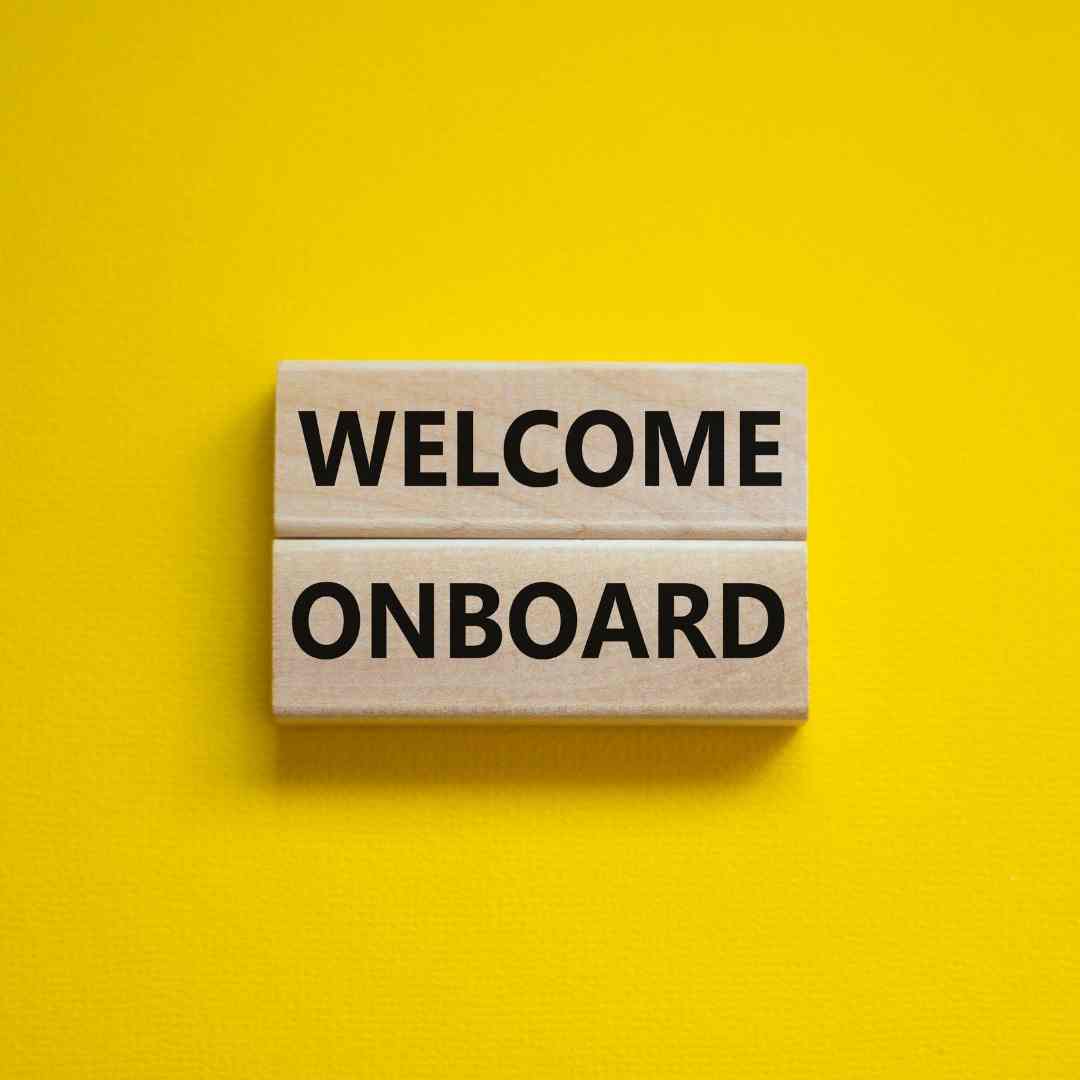Are you struggling to onboard new users to your SaaS product effectively? Do you feel like your current onboarding process might be turning potential customers away?
You have come to the right place! In this blog post, we will delve into the world of “what is user onboarding”, unraveling its importance for SaaS companies and revealing best practices and strategies.
By the end of this post, you’ll be equipped with a comprehensive understanding of user onboarding and a handy checklist.
Key Takeaways
- Create personalized onboarding experiences with interactive walkthroughs and tutorials to reduce churn rates, increase product adoption & ensure customer satisfaction.
- Leverage knowledge bases, help centers & analytics to optimize your user onboarding process for a successful experience that builds long-term loyalty.
- Follow this checklist of 4 steps for defining goals/objectives, developing flows, implementing content & monitoring/optimizing the process.
Defining User Onboarding
Every SaaS product relies on the saas onboarding process, which guides new users through the initial stages of using the software, enabling them to become proficient in its features and functionality. SaaS user onboarding, when done right, can lead users to that exciting “Aha!” moment, where they fully comprehend the value of the product and become loyal customers.
User onboarding aims to aid users in swiftly grasping the product’s value and effective utilization, which in turn increases product adoption and decreases churn rates. Key components of user onboarding include personalized experiences tailored to individual user needs, interactive walkthroughs and tutorials, and continuous support throughout the onboarding journey.

The Purpose of User Onboarding
A well-executed good user onboarding process aids users in understanding a product’s value, elevates product adoption, and decreases churn rates.
When customers understand the product’s value and are guided through the essential steps to reach their goals, they are more likely to become committed users and stay loyal to the product. Celebrating user achievements along the way, such as completing the onboarding process or reaching specific milestones, can further motivate users and enhance their experience.
Sustained support throughout the onboarding process is critical for users to have a positive software experience and transform into product evangelists. Without adequate assistance, users may become frustrated and abandon the software, leading to increased churn rates and reduced product adoption. SaaS companies can significantly improve user satisfaction and ensure a seamless transition from beginners to regular users by providing personalized onboarding experiences and ongoing support.
Key Components of User Onboarding
Personalized onboarding experiences cater to individual user needs and objectives, resulting in increased engagement and satisfaction.
Here are some key elements to consider when designing a personalized onboarding experience:
- Design a clean, intuitive, and easy-to-use interface.
- Provide a progress bar to help users understand their onboarding journey and feel encouraged to complete the process.
- Offer the option to exit or save and resume setup later for added flexibility. Adding these elements will improve the onboarding process and make sure users get a good first feeling about your product or service.
Interactive walkthroughs and tutorials make the onboarding process more engaging and effective by helping users learn through hands-on experiences. Engaging forms of interactive content include video tutorials, interactive demos, and step-by-step instructions.
Continuous support is also essential for a successful onboarding process. Some ways to provide support include:
- Providing a knowledge base or FAQ section
- Offering live chat or chatbots
- Offering direct customer support through email or phone
- Creating a user community where customers can exchange tips and best practices
These measures contribute to a smooth and efficient onboarding process, ensuring a seamless signup process.
The Importance of User Onboarding for SaaS Companies
For SaaS companies, user onboarding is pivotal because it aids in reducing churn rates and escalating product adoption, culminating in enhanced customer satisfaction.
A successful onboarding experience can turn first-time users into committed users and eventually power users who fully utilize the product’s features and capabilities.
Therefore, monitoring key onboarding metrics, such as guide completion rate, completion time, and churn rate, is essential to understanding the effectiveness of the onboarding process and making improvements.
To create an engaging onboarding experience, SaaS companies should consider utilizing multiple channels, such as emails, in-app messaging, and product tours, along with adopting a data-driven approach to test and iterate their onboarding process.
When SaaS companies use best practices for user onboarding like making it personal, having engaging content, and giving ongoing help, they help users see the product’s worth fast and use it often. This makes more people use the product and keeps customers happy.
Reducing Churn Rates
Helping users grasp the product’s value and how to use it well can cut down churn rates significantly. Giving users a well-planned onboarding process that fits their personal needs lets SaaS companies boost how many people use the product. This results in keeping more users and having fewer of them leave.
Companies that invest in a well-designed user onboarding process can expect to see a positive impact on their overall user engagement and satisfaction levels, translating to increased customer loyalty and reduced churn rates throughout the customer journey.
Boosting Product Adoption
For SaaS companies, escalating product adoption is critical, with user onboarding playing a key role in aiding users to incorporate the product into their daily routines.
Guiding users through the product’s features and functionalities and providing continuous support throughout the onboarding process, allows SaaS companies to increase user engagement and satisfaction, leading to improved retention rates and product adoption.
Companies can engage users more effectively and help them become proficient with the product in a shorter amount of time, ultimately leading to higher product adoption rates by offering personalized onboarding experiences and interactive content, such as walkthroughs and tutorials.
Best Practices for User Onboarding
User onboarding best practices will focus on crafting personalized onboarding experiences, incorporating interactive walkthroughs and tutorials, and offering continuous support and feedback. SaaS companies can ensure a smooth and effective onboarding experience that leads to increased user satisfaction and product adoption rates by tailoring the onboarding process to individual users and offering engaging, interactive content.
Furthermore, leveraging in-app messaging and guides, knowledge bases and help centers, and analytics and user tracking as tools and resources can significantly enhance the onboarding process. With the right combination of SaaS onboarding best practices and tools, SaaS companies can design a successful onboarding process that not only helps users quickly grasp the value of their product but also encourages long-term customer loyalty and satisfaction.

Personalized Onboarding Experiences
Evidence suggests that personalized onboarding experiences significantly heighten user engagement and satisfaction by addressing individual needs and objectives. Companies can help users navigate the product more effectively and uncover its value more quickly, leading to successful user activation by offering a tailored approach to onboarding.
Personalization can be achieved through the use of strategically placed tooltips, progress bars, and exit or save options for users to resume onboarding at a later time. SaaS companies can improve user satisfaction and make the onboarding process more enjoyable and engaging by offering personalized experiences.
Interactive Walkthroughs and Tutorials
Another user onboarding best practice will be the use of interactive walkthroughs and tutorials, which facilitate learning by doing, thus making the onboarding process more engaging. Engaging forms of interactive content include video tutorials, interactive demos, and step-by-step instructions that help users navigate the product and learn its features more effectively.
Offering interactive content allows SaaS companies to:
- Ensure users have a hands-on learning experience
- Help users become proficient with the product
- Increase overall user satisfaction
- Improve product adoption rates.
Continuous Support and Feedback
Throughout the onboarding process, continuous support and feedback are essential in ensuring users can access help when necessary, and in enabling companies to refine the onboarding process based on user feedback. SaaS companies can ensure users have the help they need to make the most of the onboarding process by offering various support channels, such as knowledge bases, live chat, and user communities.
Additionally, continuous feedback helps companies in the following ways:
- Identify areas for improvement
- Optimize their onboarding strategies
- Enhance the user experience
- Boost overall satisfaction and product adoption rates.
User Onboarding Tools and Resources

The overall onboarding experience for users is significantly enhanced by the use of user onboarding tools and resources. Utilizing in-app messaging and guides, knowledge bases and help centers, and analytics and user tracking allows SaaS companies to ensure a smooth and efficient onboarding process that caters to individual user needs. These tools and resources not only improve user satisfaction but also help companies monitor user behavior and optimize the onboarding process based on data-driven insights.
Incorporating these tools and resources into the SaaS customer onboarding process helps SaaS companies craft a smooth and captivating user experience. This not only assists users in swiftly grasping the product’s value but also fosters enduring customer loyalty and satisfaction. To ensure a smooth onboarding experience, it’s essential to have a well-structured saas onboarding checklist in place.
Subsequent sections delve deeper into these tools and resources, highlighting their benefits and their potential utilization to enhance the user onboarding process.
In-App Messaging and Guides
In-app messaging and guides provide contextual assistance and guidance to users as they navigate the product, making the onboarding process more engaging and user-friendly. Companies can help users complete onboarding tasks more easily and quickly realize the product’s value by offering strategically placed tooltips and other in-app messages.
In-app messaging and guides can be particularly helpful for:
- Guiding users through complex features or workflows
- Ensuring they have the support they need to make the most of the product
- Enhancing overall user satisfaction.
Knowledge Bases and Help Centers
Knowledge bases and help centers offer self-service support options for users, empowering them to find answers quickly and reducing the burden on customer support teams. Companies can ensure users have access to the information they need to make the most of the product by providing a comprehensive collection of articles, guides, and FAQs.
In addition to improving user satisfaction, knowledge bases and help centers offer several benefits:
- They free up customer support teams to focus on more complex tasks
- They streamline the support process
- They help companies provide an even higher level of service to their customers.
Analytics and User Tracking
Analytics and user tracking are essential tools for monitoring and optimizing the onboarding process. They enable companies to:
- Make data-driven improvements
- Ensure continuous optimization
- Track user behavior and engagement
- Identify areas for improvement
- Make adjustments to the onboarding process based on user input
This data-driven approach allows companies to:
- Continually refine their onboarding strategies
- Result in a more effective and engaging user onboarding experience
- Lead to increased user satisfaction and product adoption rates.
User Onboarding Checklist

To facilitate the implementation of the best practices and strategies mentioned in this blog post, a user onboarding checklist has been compiled. You can ensure a successful and engaging onboarding experience that not only helps users quickly grasp the value of your product but also encourages long-term customer loyalty and satisfaction by following this checklist.
The user onboarding checklist comprises four critical steps:
- Outlining user goals and objectives
- Crafting personalized onboarding flows
- Incorporating interactive content
- Tracking and refining the onboarding process.
Upcoming sections delve deeper into each of these steps, yielding a comprehensive roadmap for establishing an effective user onboarding experience.
Step 1: Define User Goals and Objectives
Defining user goals and objectives is the first step in creating an efficient user onboarding process. By understanding what users hope to achieve with your product, you can:
- Create a user-centric onboarding process tailored to their specific needs and objectives
- Ensure that users quickly grasp the value of your product
- Increase the likelihood of users integrating your product into their daily routines.
Remember, it’s essential to clearly define and measure the “Aha!” moments in the onboarding process to ensure maximum impact and user satisfaction.
Step 2: Develop Personalized Onboarding Flows
The second step involves developing a personalized user onboarding flow that addresses individual user needs, thereby enhancing engagement and satisfaction during the customer onboarding journey. You can help users navigate the product more effectively and uncover its value more quickly by offering a tailored approach to onboarding.
Personalization can be achieved through the use of strategically placed tooltips, progress bars, and exit or save options for users to resume onboarding at a later time. You can improve user satisfaction and make the onboarding process more enjoyable and engaging by offering personalized experiences.
Step 3: Implement Interactive Content
Introducing interactive content, like walkthroughs and tutorials, is the third step. This helps users learn by doing, thereby making the onboarding process more engaging. Engaging forms of interactive content include video tutorials, interactive demos, and step-by-step instructions that help users navigate the product and learn its features more effectively.
By providing interactive content, you can:
- Ensure users have a hands-on learning experience
- Help them become proficient with the product
- Increase overall user satisfaction
- Improve product adoption rates.
Step 4: Monitor and Optimize
The checklist’s final step is to track and refine the onboarding process using analytics and user tracking, thus enabling data-driven enhancements and ongoing optimization. You can identify areas for improvement and make adjustments to the onboarding process based on user input by keeping a close eye on user behavior, engagement, and progress.
This data-driven approach allows you to:
- Continually refine your onboarding strategies
- Deliver a more effective and engaging user onboarding experience
- Increase user satisfaction
- Improve product adoption rates.
Summary
In conclusion, user onboarding is a crucial aspect of SaaS products that can significantly impact user satisfaction and product adoption rates.
SaaS companies can ensure a seamless and effective onboarding process that ultimately leads to increased user satisfaction and long-term customer loyalty by following best practices for user onboarding, such as creating personalized onboarding experiences, implementing interactive walkthroughs and tutorials, and providing continuous support and feedback.
With the right combination of strategies and tools, your company can create an engaging and successful onboarding experience that will help users quickly grasp the value of your product and become loyal customers.
Next, read: The Secret Formula for SaaS Success: Unpacking the Rule of 40
Frequently Asked Questions
What do you mean by user onboarding?
User onboarding is the process of familiarizing new users with an application, providing them with training, helping them set goals, and ensuring success within the organization.
What is the goal of user onboarding?
The goal of user onboarding is to help users find and benefit from the product’s core value, especially for product-led companies with a freemium or free trial model.
How do I onboard a user?
To onboard users, create an engaging welcome screen and call-to-action to prompt their first task. Use an onboarding checklist to keep tasks short and focused on key items. Follow a 7-step framework which includes understanding customer goals, designing a customer-centric flow, offering value early, making signup easy, picking onboarding elements, personalizing onboarding, and engaging in continuous discovery.
What is the difference between user onboarding and customer onboarding?
User onboarding is about helping people understand and use a product, while customer onboarding focuses on convincing people to become paying customers and build loyalty.
What are the key components of an effective user onboarding process?
Effective user onboarding processes should be personalized, interactive and supported throughout the journey for the best experience.





